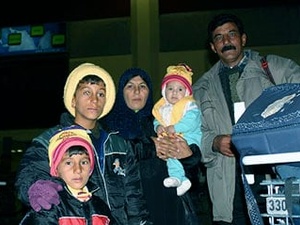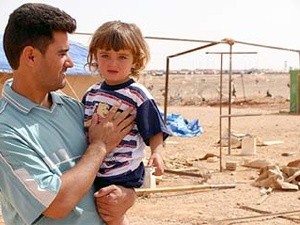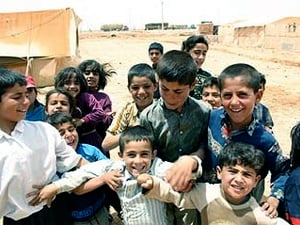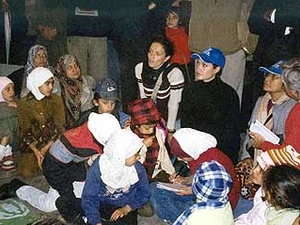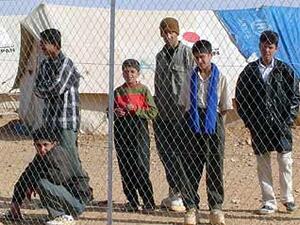Iraq: no man's land refugees
Iraq: no man's land refugees
A group of 185 Iranian Kurd refugees arrived in Sweden on Thursday, after spending more than 18 months in the no-man's land between Iraq and Jordan. They join another 202 Iranian Kurds who arrived in Stockholm two weeks ago after being accepted for resettlement in Sweden.
The permanent resettlement of these 387 refugees is the result of months of effort by UNHCR. However, the refugee agency wants to draw attention to the plight of some nine hundred refugees who remain near the Jordanian border - 760 of them still in the no-man's-land, another 130 in Ruweished camp inside Jordan. In both locations, refugees have been living under very harsh conditions since the spring of 2003, staying under tents in a desert area subject to extreme climatic variations. They now face a second winter of freezing temperatures with no immediate solution in sight.
Most of the refugees in Ruweished and in the no man's land are Iranian Kurds and Palestinians who had previously been in exile in Iraq, but fled to escape the fighting and unrest last year. Since then, UNHCR has submitted 880 cases for resettlement to such nations as the United States, Australia and the Scandinavian countries. Some 500 of these requests are still pending.
UNHCR also wrote to many Arab countries requesting them to grant shelter, even on a temporary basis, to Palestinian refugees stuck at the Jordanian border. Last year, Jordan itself accepted to give temporary asylum to 386 Palestinians with Jordanian spouses while 250 Palestinians chose to leave Ruweished to go back to Iraq. The refugee agency has undertaken to assist countries with the financial cost of hosting Palestinian refugees and we hope for a positive reaction from Arab states.



